SPORTS
The Formula 1 of sailing
Iceboats surpass 100 km/h. When lakes freeze, boaters race.
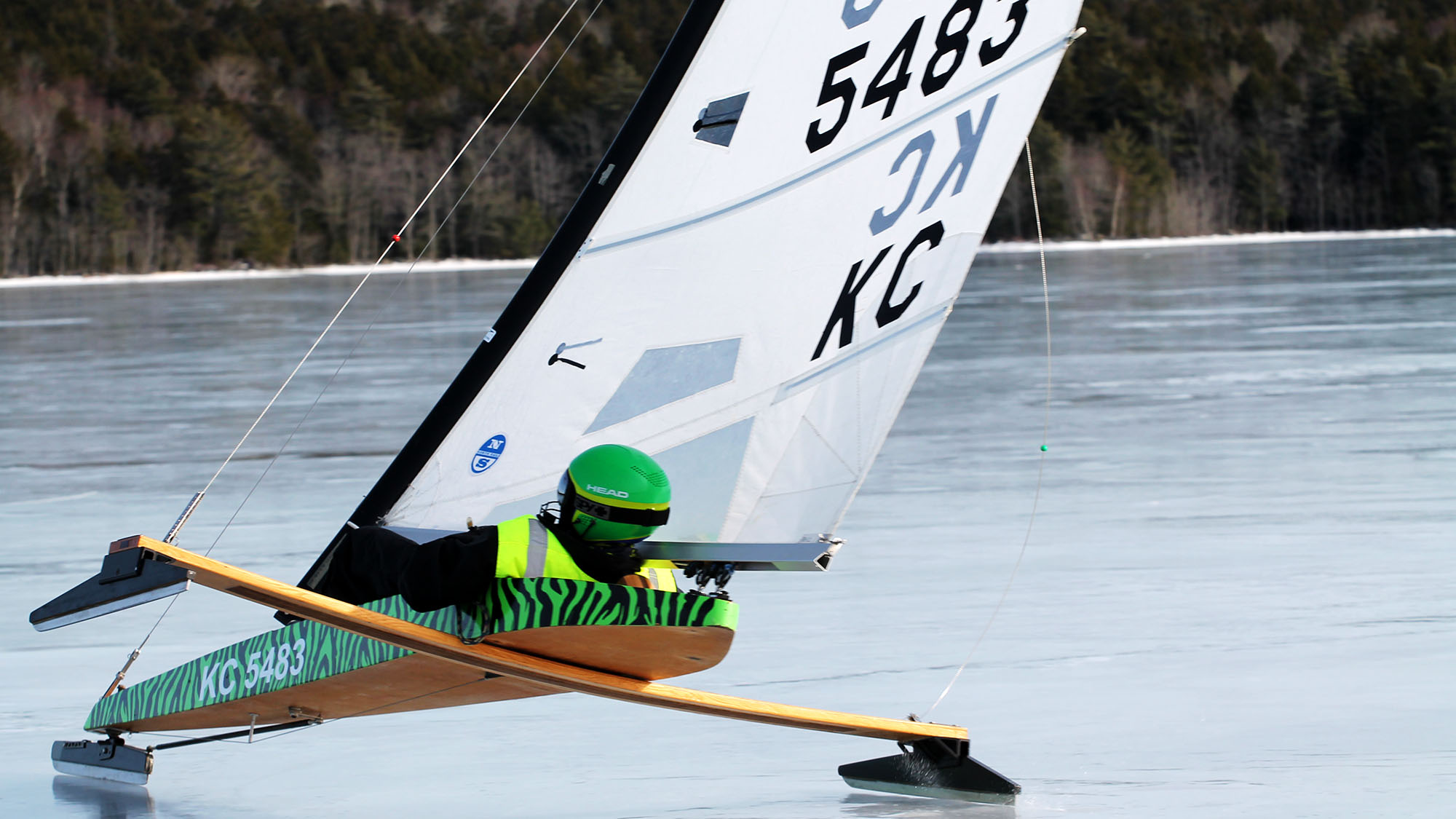
caption
An iceboater sails on Sherbrooke Lake on Feb. 12. His boat tilts to one side, which is called "hiking."This boat weighs less than its sailor. It has steel blades and a spruce frame, trimmed with Honduran mahogany.
“It’s an adrenaline junkie sailing machine,” says Bob Crinion, 58, who is a third-generation iceboater.
Crinion is ranked second in Canada and 29th in the world for iceboating, based on the International DN Ice Yacht Racing Association.
An iceboat is a lightweight vessel that uses a sail to glide on ice. The type of iceboat that Crinion builds — a DN iceboat — was designed in 1936 (the DN stands for Detroit News, a newspaper that sponsored an iceboat-building competition that led to the design). Related stories
Crinion belongs to a club of approximately 25 ice boaters in the Maritimes. On a Tuesday in February, when the ice is smooth, Crinion and fellow club members race on Sherbrooke Lake.
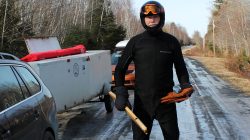
caption
Crinion purchased an oversized suit because, on the coldest days, he wears two pairs of long underwear underneath the suit.Crinion’s suit is made of neoprene and fleece, with a windproof membrane. The suit is designed for scuba diving in warm climates (as another hobby, Crinion does free diving in the Caribbean, using no oxygen tank). He also wears ski goggles and a ski helmet with a jaw protector.

caption
Crinion built his own trailer with a fellow club member. The trailer has travelled with him to Chicago, Sarnia, Ont. and Buffalo, N.Y.Crinion has been walking on ice since he was four-years-old. He grew up on an island near Mahone Bay. In the winter, he and his siblings had to walk across the ice to get to school. They learned how to pull themselves out of the water when they fell through the ice.

caption
For grip, Crinion wears cleats designed for track and field.As a teenager, Crinion began ice boating with his grandfather and father. His current boats cost approximately $2,500 worth of materials, but he says the original DN iceboats were made of cheap parts, including the steel from bedframes.
“It was supposed to be that the poor man could build a little ice boat and put it on the roof of his car and go to competitions,” Crinion says.
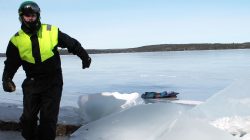
caption
Tyler Garland is one of the boaters who races against Crinion.Before retiring, Crinion worked in IT and repaired printers and other office equipment. To stay fit, he runs 4 km several times per week, and he plays underwater hockey. Most of his club mates are also retired, and the club has trouble attracting young people.
Crinion has two theories to explain the lack of millennial interest: “You have to lug the equipment to and from the ice, (or) maybe it’s the cold factor.”
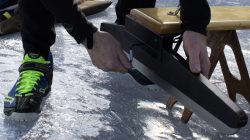
caption
The blades on iceboats are longer and sharper than the blades on skates.The boat has three runners with each blade sharpened to a peak. “It’s sort of like the peak of your house,” Crinion says.
His own house is near Hammonds Plains, N.S., but he scouts for strong ice around Nova Scotia. He also writes and receives e-mails from other iceboaters, notifying him about ice conditions (they jokingly call these messages, “ice spam”).
To scout the ice, he cuts out a chunk with an axe or drill and measures the depth. Counter-intuitively, he says one indicator of strong ice is that the ice has cracks.
Another good indicator, he says, is when the ice is black or transparent. “It’s considered the crème de la crème of iceboating ice,” he says. “It appears to be black and spooky-looking, but it’s very, very strong.”
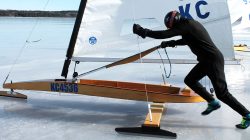
caption
Crinion performs a push start. At six-foot-three, he is known for fast starts.While iceboating, Crinion has never broken a bone, but he has broken boats. In one case, he was going 100 km/h and hit open water. At another lake near Truro, his boat went through the ice.
“I had to take my balaclava and my goggles off underwater and untangle myself and swim quite a distance,” he says. “If you do (this sport) long enough, you’re going to go for a swim sometimes.”
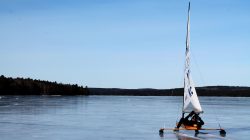
caption
“It’s like lying on a luge sled that has a sail,” Crinion says.Beginning on Feb. 17, Crinion will compete in the North American iceboating championship. Four days prior, he still does not know the location of the competition, which depends on which lakes have ideal ice at the time.
He says the event could take place anywhere between Kingston, Ont. and Sandusky, Ohio. These venues are an eight-hour drive apart. He will start driving west and wait for a phone call to determine if he should veer north or south.
Wherever he goes, his station wagon will tow his iceboat. “I think that it has a very, very high adrenaline thrill factor,” he says of the boat. “There’s not much holding it back.”


D
Doug Gaudet